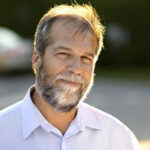I am sure you have all read the stories. In the aftermath of an arrest of a mass murderer (or a terrorist), neighbours, friends and colleagues are interviewed about what they knew about the suspect.
Here is what they tend to say:
- I never saw it coming!
- He was the nicest guy!
- I can’t believe that he would have done such a thing!
In the wake of the London attacks, neighbours of the terrorist who was shot dead on the scene, Khalid Masood, told reporters that “he had been the model suburban neighbour: keeping to himself, washing his car, mowing his lawn, even passing on a few footballing tips to the local kids”. Here is another offering from a man who stayed in a hotel with Masood: “Nothing in his demeanour or his looks would have given me any thoughts that would make me think he was anything but normal.” That description is not consistent with someone who ran over pedestrians and tried to storm the British Parliament.
In the case of a Belgian man believed to have prepared to strike people with a vehicle in Antwerp – possibly inspired by terrorism (an attempt that occurred the day after the London atrocity) – a friend told the media ‘I am almost 100 per cent sure that this person – in my eyes – was not capable of committing a terror attack”.
So, what gives?
Telltale signs
Simply stated, people do not know what to look for. I say this not out of arrogance or elitism but rather out of experience. I have interviewed the parents of children (now dead) who have expressed complete bafflement regarding what happened to their offspring. And yet when the signs of problematic behaviour and telltale ideology are presented to them, a light goes on and they bemoan the fact that if they had known then what they know now, they would have been in a better position to take action (at a minimum challenge their offspring to justify the attitudes they held and at a maximum get outside help).
I am not so certain that this lack of insight is limited to cases of terrorism. There are most probably similar, yet different, signs that surface when a person abandons long-held beliefs and behaviours and opts for a new direction that brings them trouble (drug use, gang membership, general criminality). And unless you know what those signs are, you are not in a position to do anything about it.
No template
What, then, is the answer? It is simple actually: training and awareness raising. And a good place to start, if I may be so bold, is to have a look at my 2015 book The Threat from Within: Recognizing Al Qaeda-inspired radicalization and terrorism in the West (Rowman and Littlefield). In there you will find an entire chapter on signs to take note of when someone is probably going down the path to violent extremism. The book was based on a decade-and-a-half of research carried out while I was at CSIS, so it is heavily data-driven.
When it comes to what to do about someone about whom concerns have been raised, that is a little bit trickier. Parents/siblings/friends/religious leaders have to decide whether the individual in question can be reasoned with and deflected from a bad end or whether the case is serious enough – i.e. there is a threat to national security – to involve CSIS or the RCMP. That call can only be made on a case by case basis: there is no template to help in that regard.
In the end, there are always overt signs of violent radicalisation. Always. It is just a matter of knowing what to keep an eye out for.
Phil Gurski worked for more than three decades in Canadian intelligence, including 15 at Canadian Security Intelligence Service (CSIS), and is the author of the Threat from Within and Western Foreign Fighters (Rowan and Littlefield). He blogs at http://www.borealisthreatandrisk.com/blog/
Phil Gurski is a former terrorism analyst at the Canadian Security Intelligence Service (CSIS). He specializes in radicalization and homegrown Al Qaeda/Islamic State/Islamist-inspired extremism and has published several books, including the forthcoming When Religions Kill: how extremists justify violence through faith.” He is a member of New Canadian Media’s board of directors.





